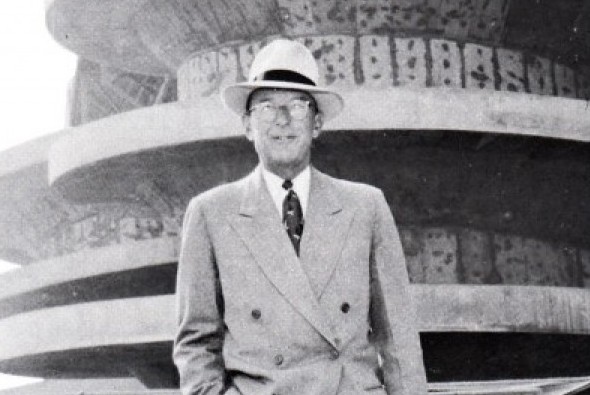
By David Eskenazi and Steve Rudman
In February of 1946, there came to the University of Washington, via the recommendation of fanatical Husky booster Roscoe Torchy Torrance, an insurance salesman named Harvey Cassill. He was a man of action and vision who pushed to get things done, a can-do fellow in the can-do era that followed World War II.
It did not take Washingtons new athletic director long to stare through his rimless spectacles and observe that the schools football program had fallen far behind those at Stanford, Cal, USC and UCLA.
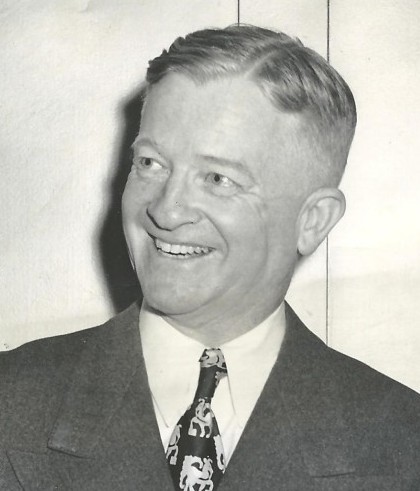
Nor did it take him long to determine what he was going to do about it. He was going to place Washington football — indeed, all of Husky sports — on the athletic map. Under Cassill, the Huskies were going to become an annual top-10 team and Rose Bowl contender.
Cassill planned on having big-name coaches in the schools four marquee programs (football, basketball, baseball, track), those coaches would recruit big-time players, and Cassill would personally upgrade Washingtons football and basketball schedules to make them more appealing to the masses.
Of course, Washington would require a larger football stadium because Cassill would would need additional gate receipts to float the spectacles he planned.
With his managerial mandate clear, Cassill set to work. Undaunted by criticism that the Huskies were getting in over their heads, he signed the first home-and-home football series with Notre Dame for the 1948 and 1949 seasons. Scoffing at the argument that Washington could not fill the 41,000 seats it had, Cassill politicked for a 15,000-seat upper deck addition to the south side of Husky Stadium.
Since the programs Cassill envisioned required far more talented players than had previously been available to Washington, Cassill was instrumental with former Lewis and Clark High schoolmate Torrance in forming the Washington Advertising Association, a downtown booster group whose financial resources would one day make it possible for the Huskies to recruit with elite schools.
Cassills series with Notre Dame bombed. After the Irish dismantled the Huskies 46-0 in South Bend in 1948, Cassill and his new, hand-picked football coach, Howie Odell, conjured up a plan to reverse things in 1949 when coach Frank Leahy, Heisman Trophy candidate Leon Hart and the Irish were scheduled to play in Seattle.
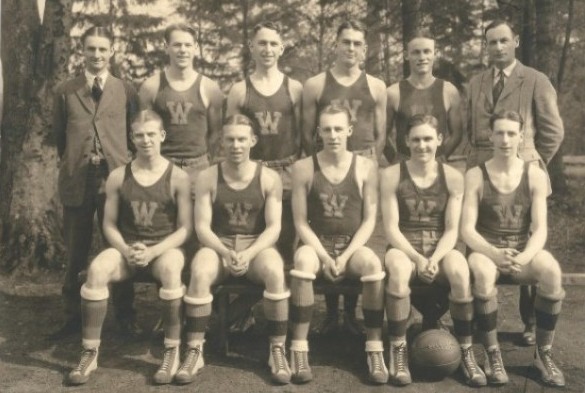
But first, to take advantage of Notre Dames marquee status, Cassill jacked up ticket prices to $4 from the normal top of $3. That move worked. Husky Stadium, which seated 41,000, sold out quickly and scalpers had a field day.
Then, to gain a competitive advantage against Notre Dame, which had won 29 in a row, Odell, with Cassills blessing, compiled a film that showed Notre Dame, which always seemed to receive preferential treatment from referees, repeatedly guilty of holding with no flags thrown. The day before the game, Cassill and Odell met game officials with no representative of Notre Dame present.
The next day, the refs flagged the Irish 11 times, mostly for holding, while issuing just four penalties against the Huskies. Undeterred, Notre Dame out-rushed UW 297-17 and won easily 27-7. When Leahy heard about Cassill’s and Odells secret meeting with game officials, he went ballistic, and vowed never to play Washington again.
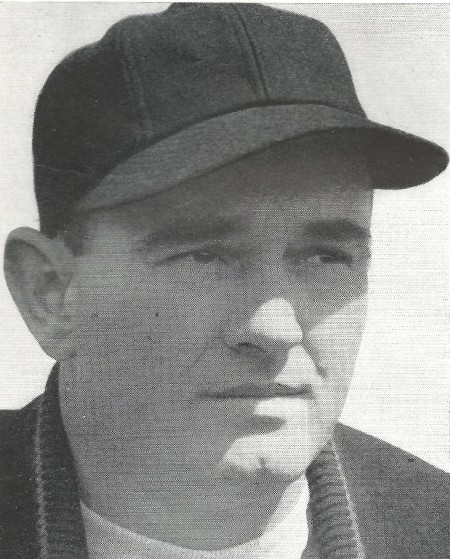
How could that be a good game when we had to play four extra men? Leahy, enraged, asked The Seattle Post-Intelligencer. The officials today, all four of them, tried their best to even up a football game. If it was intended to be an instructional clinic, a representative of Notre Dame should have been invited. I believe the entire procedure tended to send the officials into the game with a superficial attitude.
Washington and Notre Dame did not meet again until 1995, 22 years after Leahys death.
The mistake, said Cassill, absolving himself and Odell of any blame, was that the officials didnt ask Leahy to come in and look at the film, too.
By the time of the Notre Dame incident, Cassill already had already compiled a checkered history of controversy. No sooner had he become Washingtons first permanent athletic director since Ray Eckmann (1936-42) than he created a public roil by firing one of the states most beloved athletic figures, basketball and track coach Hec Edmundson, who had just completed his 24th winning season with a 16-8 record.
Edmunson had hoped to coach basketball two more seasons, and was shocked when he received a message from Cassill to the effect that Cassill appreciated Edmundsons carefully-worded letter of resignation (see Wayback Machine: Ace Coach Hec Edmundson).
Edmundson, who could not recall writing such a letter, had not inspired one iota of discontent about the basketball program, but Cassill simply wanted to exert his authority. So he replaced Edmundson with Art McLarney, a former professional baseball player (three years in the majors, 1933-34 with the Seattle Indians), who originally came to Washington as an assistant football coach.
Cassills dismissal of Edmundson created such a stir that Cassill was forced to re-evaluate his decision. He eventually came to the conclusion hed made a mistake and personally apologized to the old basketball coach.
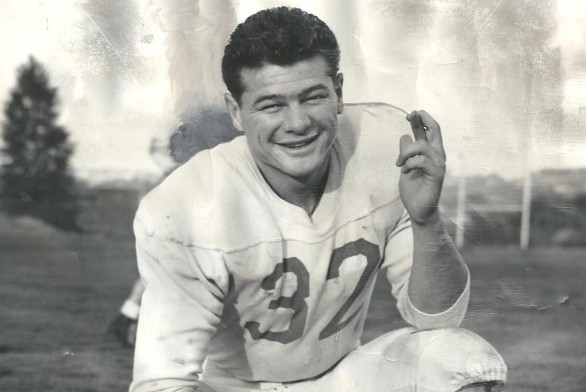
Cassill had been on the job a year when he made up his mind that Ralph Pest Welch, UWs head football coach since 1942, had to go. Welch served as a loyal assistant under Jimmy Phelan for 12 years (1930-41), loved the University of Washington, and almost everyone liked him, particularly Husky players.
But Welch was not a Harvey Cassill kind of guy. Rough around the edges and sort of a rumpled character, he did not project the image Cassill wanted in a head coach. Cassill sought some flash, so Cassill accepted Welchs letter of resignation, which Welch, like Edmundson before him, could not recall writing (see Wayback Machine: Pest Welchs Crazy War Years).
Cassill placed the name of Clark Shaughnessy, who had built a solid reputation at Stanford by pioneering the T-formation, at the top of his list to replace Welch. But Shaughnessy wouldnt leave the Bay Area. Cassill sought out several other high-profile candidates, only to discover that none of them would budge, either.
To tell you the truth, Cassill confided years later to Husky historian Dick Rockne, we werent too desirable a spot in the eyes of a lot of coaches. I wanted a pretty good football coach. I think I may have been better off if Id gone out and looked for a hungry young man.
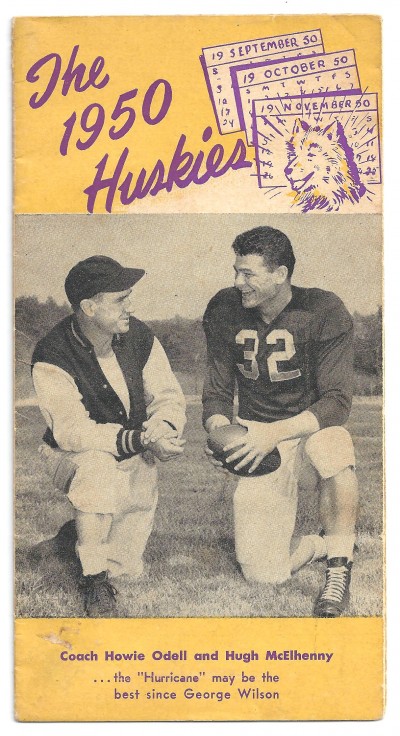
The man he got, Odell, was just 37 years old, bright and personable, and his Yale teams had established a .700 winning percentage over a six-year span. Odell came aboard on a one-year contract worth $15,000 and only had to deliver a decent record before he inherited two of the most promising underclassmen in Husky history, quarterback Don Heinrich and running back Hugh McElhenny (see Wayback Machines: Deadeye Don Heinrich and McElhennys 100-Yard Punt Return).
But crisis struck right away. Odell and the Huskies expected that Dick Ottele, Washingtons starting quarterback in 1947, would play the position again in 1948. But just before the season started, Ottele signed a professional contract with the Los Angeles Dons of the All America Football Conference, joining a team that included Herman Squirmin Wedemeyer, who had helped lead St. Marys and former UW coach Jimmy Phelan to a major upset of Washington in 1946.
The Huskies scrambled to find a replacement quarterback and Odell, with Cassills approval, brought in Los Angeles junior college transfer Ansel McCullough.
Not long after, Nebraska athletic director Potsy Clark, the schools former football coach, wrote an article in which he decried the-then widespread practice of buying athletes. Clark never identified the school, but wrote:
To provide one instance of the futility of buying athletes, I know of one West Coast school whose quarterback signed a pro contract before the 1948 season started. It was decided something must be done quickly. So the schools alumni group brought in a junior college quarterback, who had looked good in a postseason game.
“He was presented $3,500 and great things were expected of him. The deal became known and the conference in which the team plays slapped a $3,500 fine on the school. So the total cost of this one player was $7,000.
Although Potts never identified the school he wrote about, an infuriated Cassill held a press conference in which he insisted Washington was not the school to which Potts referred. No other Pacific Coast Conference member uttered a word about Clarks allegations.
Cassills boldest move was the new upper deck in Husky Stadium. Financed by a bond issue which had student support, it opened Sept. 23, 1950 for Washingtons season-opening game against Kansas State but not exactly to rave reviews.
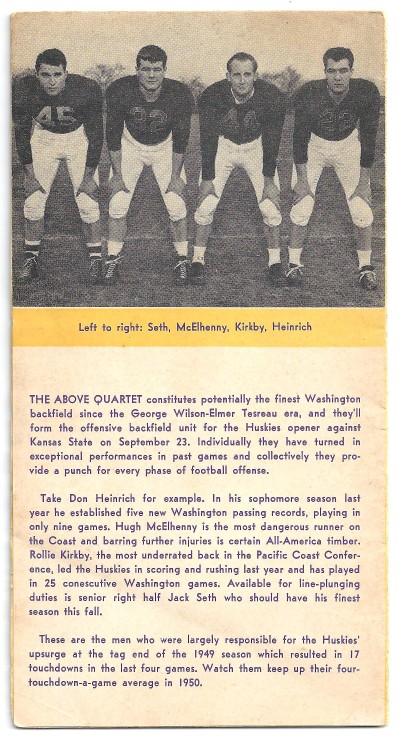
Dubbed Cassills Folly, many fans were reluctant to clamber to its steep heights for fear the whole thing would come tumbling down. But this idea didnt bomb as the Notre Dame series did. Cassills Folly eventually became Cassills Castle,” and Husky Stadiums 55,000-seat capacity not only served as the ideal environment for future heydays under coaches Jim Owens and Don James, it ultimately proved inadequate to meet the demand.
Cassill, this can-do athletic director, got a lot of what he wanted because, as Torchy Torrance described him, he was a completely driven and dedicated man.
Born in Canton, SD., in 1900, Cassill grew up in Spokane, entered the University of Washington in 1919 and graduated in 1923 with degrees in business and economics and with a reputation as a campus activist, socialite, and fraternity man. Cassill had no experience in intercollegiate athletics except for the year (1922) he spent as Washingtons varsity baseball manager and the year (1924) he put in as ticket manager for the Associated Students of the University of Washington.
After graduation, Cassill managed the Wilsonian Apartments and peddled insurance. In 1941, he joined the personnel department at the Tacoma Shipyards and then became assistant director of supervisory training for the War Manpower Commission and a manager in the Civil Service, which is where he was when Washington surprisingly hired him to take over for Al Ulbrickson, who had doubled as interim athletic director and head crew coach during World War II.
Cassill never would have gotten the ADs job without Torrances endorsement. They attended Spokanes Lewis and Clark High School together and Torchy believed Cassill possessed the management skills necessary to run the athletic department, plus the vision to profoundly enhance Washingtons athletic profile, also Torchy’s main agenda. Torchy wasnt wrong (see Wayback Machine: Roscoe Torchy Torrance), but even Torchy claimed surprise at Cassills resourcefulness.
Cassill signed home-and-home agreements with several major schools in addition to Notre Dame. He extended Washingtons football series with Minnesota, then one of the most powerful teams in the Midwest, and signed a home-and-home basketball series with the Gophers as well.
Cassill added intersectional football games with Illinois, Michigan, Baylor and Ohio State, and brought Rutgers University to Seattle to race against the UW rowing team. For Cassill, nothing was done on a small-time basis.
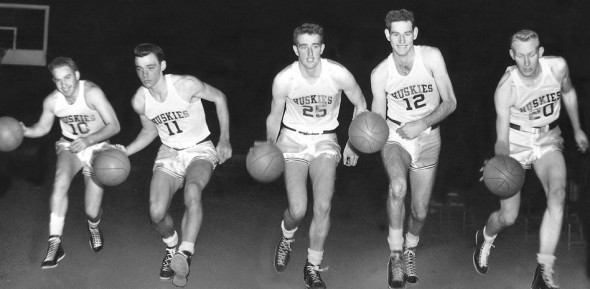
He wanted the Huskies to travel by airplane, befitting their status — in his estimation, anyway as one of college football’s emerging elite. That became a reality in 1946. He wanted a new facility for the UWs rowing teams. He got that, too: Conibear Shellhouse, also in 1946.
Cassill wanted the Final Four played at Hec Edmundson Pavilion and not only got that once, but twice, in 1949, when Adolph Rupp and Kentucky defeated Oklahoma A&M, and again in 1952, when Phog Allen and Kansas defeated St. Johns. Seattle did not receive another Final Four until 1984.
Cassill also made successful bids for the 1947 NCAA Swimming and Diving Championships, the 1951 NCAA Outdoor Track & Field Championships (held in his expanded Husky Stadium) and the 1952-53-54 NCAA Tennis Championships, played at the Seattle Tennis Club. Because of these involvements, Cassill served a term as executive chairman of the NCAA and two terms on the NCAAs Television Committee.
(Cassill, like many athletic directors of his era, worried that college football on the new medium of television would cut into gate receipts, and proposed that the NCAA minimize televisions emerging impact by permitting only the telecasts of the least attractive games. The TV committee adopted Cassills policy and it remained in effect for nearly a decade.)
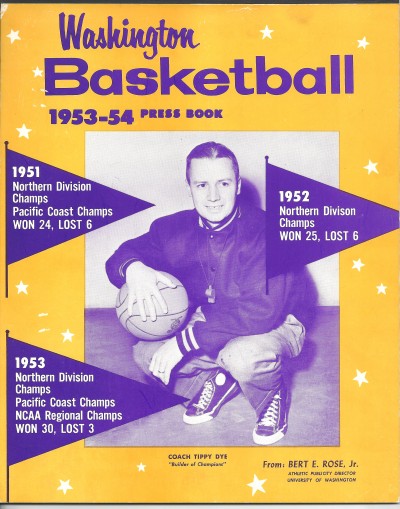
Successful as Cassill was in athletic department business matters, he just didnt have an eye for coaching talent. The two football coaches he hired, Odell (1948-52) and Johnny Cherberg (1953-56), went a combined 33-43-4. The first basketball coach Cassill hired, McLarney, quit, citing stress, after just three seasons.
Odell was probably Cassills worst hire and most luckless UW coach ever. Here he had Heinrich and McElhenny, two future members of the College Football Hall of Fame, and went 11-9 in the two seasons (1949-50) they actually played together.
Odell had a lot of good offensive ideas, but couldnt recruit. He wasnt much of a motivator, either, according to former Husky player Tracy King, a teammate of Heinrich and McElhenny.
He tried as hard as he could to give pep talks, but they didnt really turn you on, said King. Most high school coaches gave better pep talks. Hed say, Youve got to go out there and fight and scratch. I can remember one time him saying, Nobody can run like Hugh and nobody can pass like Don. Go out and get them!
Cassills best hire became basketball coach Tippy Dye, a former football-basketball Ohio State All-America who assumed control of the program in 1951 and, with Bob Houbregs playing center, took the Huskies to the 1953 Final Four for the first (and only) time in school history (see Wayback Machine: Tippy Dyes Life Well Lived).
In all, Cassill hired seven coaches in the UWs four major sports and fired four six if you count Edmundson and Welch, hired by other ADs. In addition to Odell and Cherberg in football and McClarney and Dye in basketball, Cassill hired Warren Tappin and Bill Marx in baseball and Stanley Hiserman in track.
Cassills Jan. 25, 1956 boot of Cherberg proved to be Cassills undoing.
On Nov. 21-22, 1955, two separate groups of Husky football players met with Torrance to complain about Cherbergs tyrannical coaching methods and volcanic temper. Torrance told the players to talk to Cassill. They did, and the meeting was supposed to be secret, but news of it leaked and for three sensational months the feud monopolized headlines.
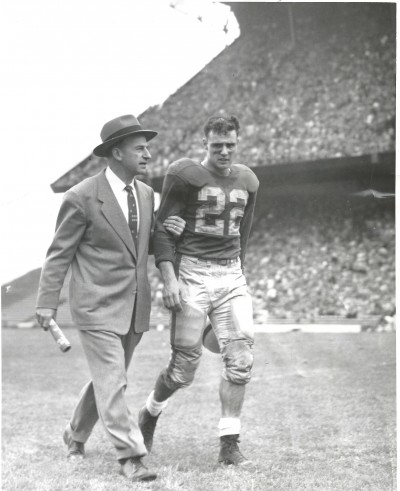
Many fans sided with the players, insisting Cherberg should go. Most, though, sided with Cherberg and chided the players for being crybabies. On Dec. 10, the UW Board of Regents came out in support of Cherberg on the belatedly emphasized premise that he could restore harmony to the football program.
But the clamor to oust Cherberg would not go away and finally Cassill saw his chance to rid himself of the coach, with whom hed always had a personality clash. Cassill pulled the trigger Jan. 25, 1956.
I had a difficult decision before me with respect to John Cherberg, said Cassill. Whether it was Johns fault or not, the facts clearly and conclusively indicated that the situation was beyond recovery so far as his problem was concerned.
I had to make one of two choices. I could have permitted John to go through the 1956 season with all the pain, turmoil and disappointment I knew that entailed and then separate him from his position because of a most unsatisfactory season. Or, I could terminate the situation and hope that a new head would bring harmony, teamwork and morale back into the picture. I chose the latter.
Cassill chose unwisely, in the minds of most Husky fans, who immediately clamored for his ouster.
In retaliation for his own axing, Cherberg went on television, began spilling stories, and suddenly everyone knew something about Torrance’s Washington Advertising Association and the slush fund it maintained to pay UW players more than they were entitled to earn undr their scholarship terms. Sports Illustrated started sniffing around and published a long piece titled Boosters Mess It Up At Washington.
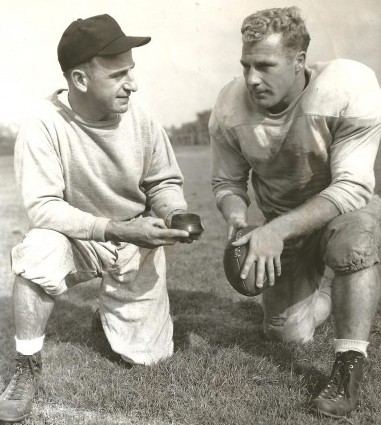
A key piece of information became the disclosure that $28,000 in proceeds from a 1955 pro football exhibition game at Husky Stadium between the New York Giants and San Francisco 49ers had been diverted into Washington Advertising Association coffers, earmarked to spend on Husky athletes.
When that came out, nine days after Cassill fired Cherberg, and two days after Cassill said, Theyll have to fire me, I won’t resign, Cassill tendered his resignation following a push by alumni and one state legislator that Cassill remove himself from the universitys bollixed athletic situation.
Much as I regret severing what has been for me a wonderful relationship with a great university, I have only one honest choice, Cassill said. If it was right for me to separate John Cherberg from his coaching responsibilities and it was then I must now resign as athletic director. I can see no other way that our program can be straightened out.
The date: Feb. 9, 1956. Cassill exited without a nationally ranked football team, or a Rose Bowl team, and he failed to make the Huskies one of the elite collegiate athletic programs in the country. Instead, he left the UW facing an NCAA-mandated two-year probation.
I worked for Cassill, said former UW athletic department official Wendell Broyles. He was my boss. I liked him. He was a strange guy, a character. He was controversial and sometimes people found him hard to take. In fact, some people disliked him intensely. I think he may have had some personality problems.”
Whatever they were, Mr. Can-Do took them with him when he went back to selling insurance. He died at his home at 2906 Harvard Ave. on July 17, 1979 of undisclosed causes. Less than a year later, the National Association of Collegiate Directors of Athletics inducted Harvey Cassill into its Hall of Fame.
—————————————-
Many of the historic images published on Sportspress Northwest are provided by resident Northwest sports history aficionado David Eskenazi. Check out Davids Wayback Machine Archive. David can be reached at (206) 441-1900, or at seattlesportshistory@gmail.com

4 Comments
I was a UW undergrad from 1951-5 and a Daily sports editor and columnist. I also
knew quite well most of the Husky varsity athletes, including several who were my fraternity brothers. I had periodic dealings with Cassill and found him arrogant and overbearing.
It was common knowledge that monies were being doled out to selected athletes. On one occasion, he arbitrarily stripped a scholarship from a Husky basketball regular.. Another athletic department staff member told me that Cassill had no justifiable basis on which to do this. When, as Daily sports editor, I asked Cassill about the matter, he quickly backed off and restored the scholarship. But he sent a memo to staff warning darkly that internal matters should be kept confidential. Later he railroaded several Husky football players out of
their scholarships, while letting others remain, in an attempt to evade accusations of illegal recruiting practices.
Cassill got a lot done but, to my observation, did not bother himself with ethical fineprint.
He probably would not have lasted a split second in anything other than the anything-goes
environment that prevailed during the early part of his tenure.
Thanks for the imput, Ted. That’s great.
I was a UW undergrad from 1951-5 and a Daily sports editor and columnist. I also
knew quite well most of the Husky varsity athletes, including several who were my fraternity brothers. I had periodic dealings with Cassill and found him arrogant and overbearing.
It was common knowledge that monies were being doled out to selected athletes. On one occasion, he arbitrarily stripped a scholarship from a Husky basketball regular.. Another athletic department staff member told me that Cassill had no justifiable basis on which to do this. When, as Daily sports editor, I asked Cassill about the matter, he quickly backed off and restored the scholarship. But he sent a memo to staff warning darkly that internal matters should be kept confidential. Later he railroaded several Husky football players out of
their scholarships, while letting others remain, in an attempt to evade accusations of illegal recruiting practices.
Cassill got a lot done but, to my observation, did not bother himself with ethical fineprint.
He probably would not have lasted a split second in anything other than the anything-goes
environment that prevailed during the early part of his tenure.
Thanks for the input, Ted. That’s great.